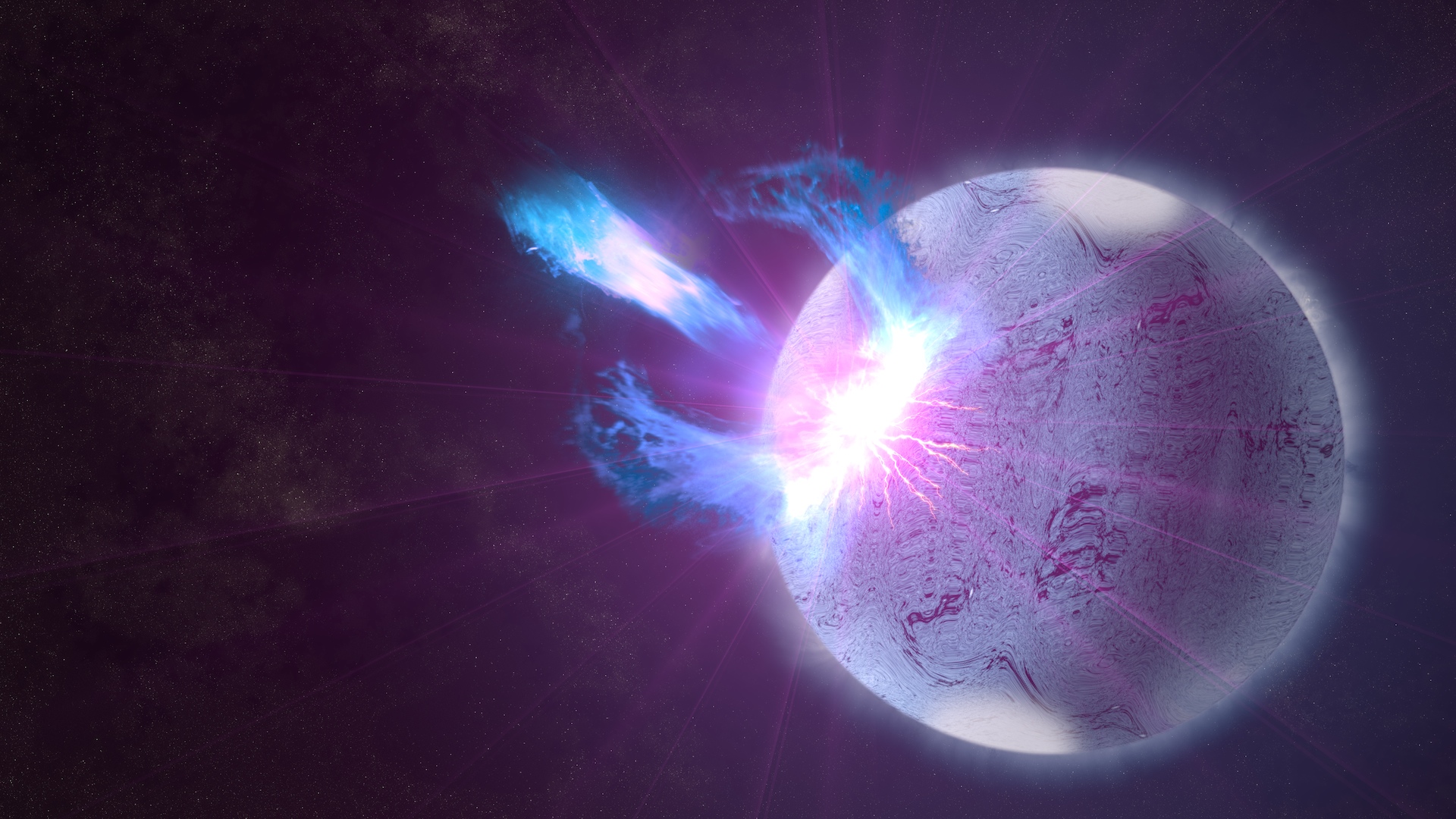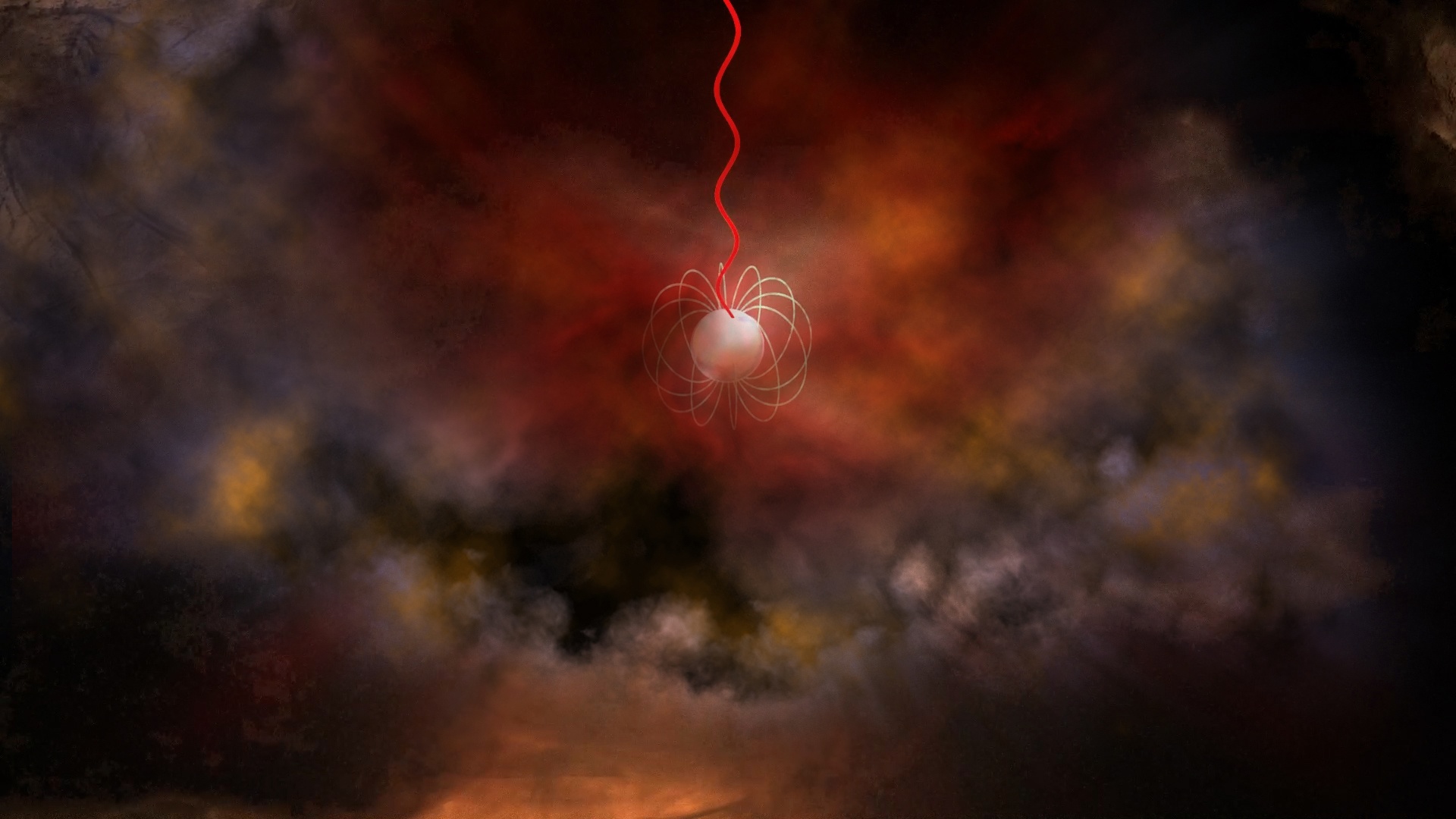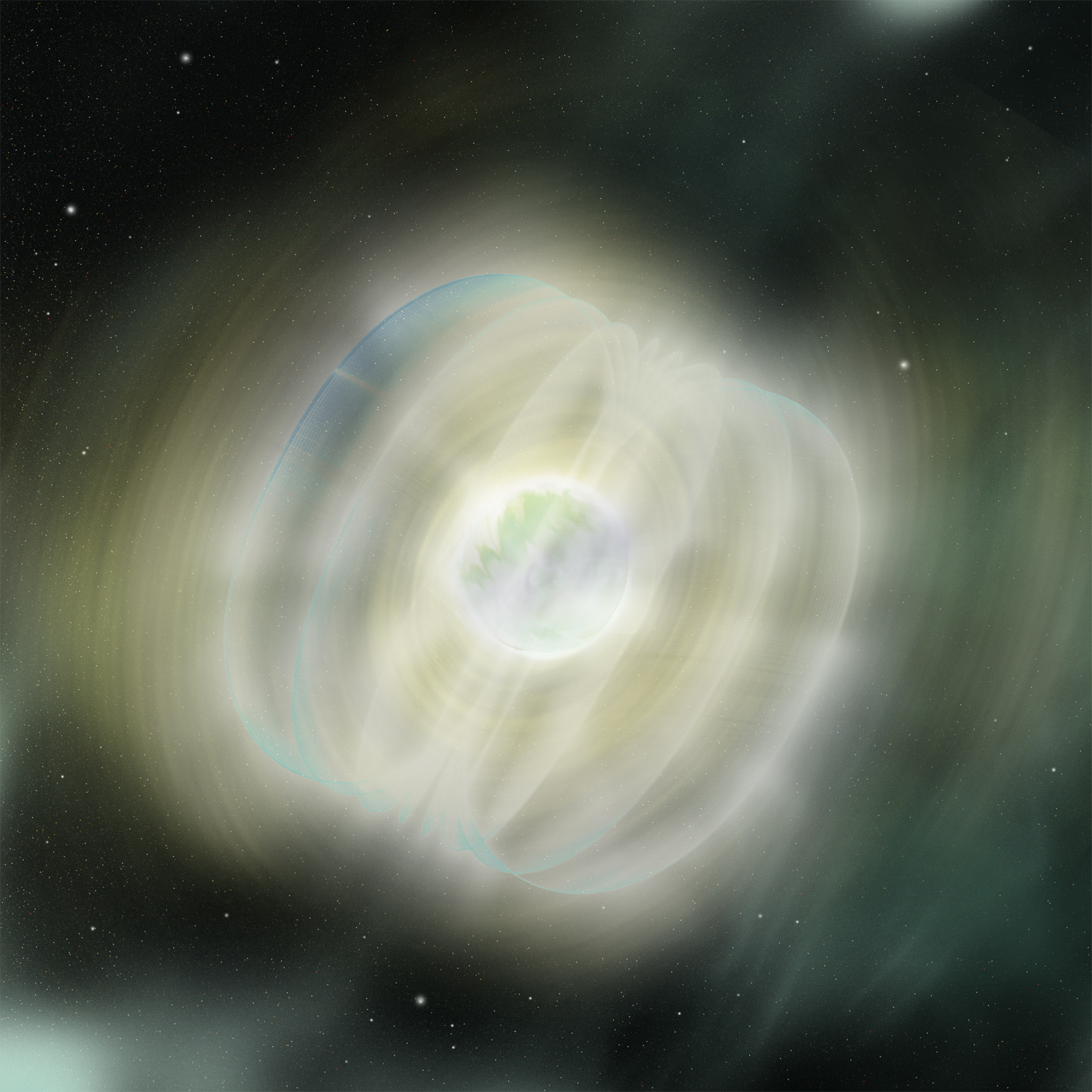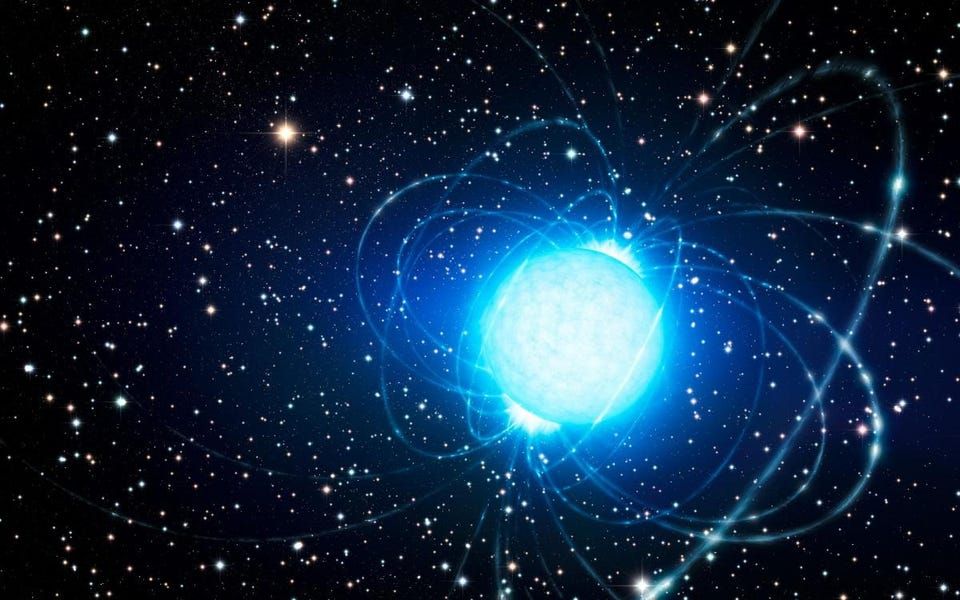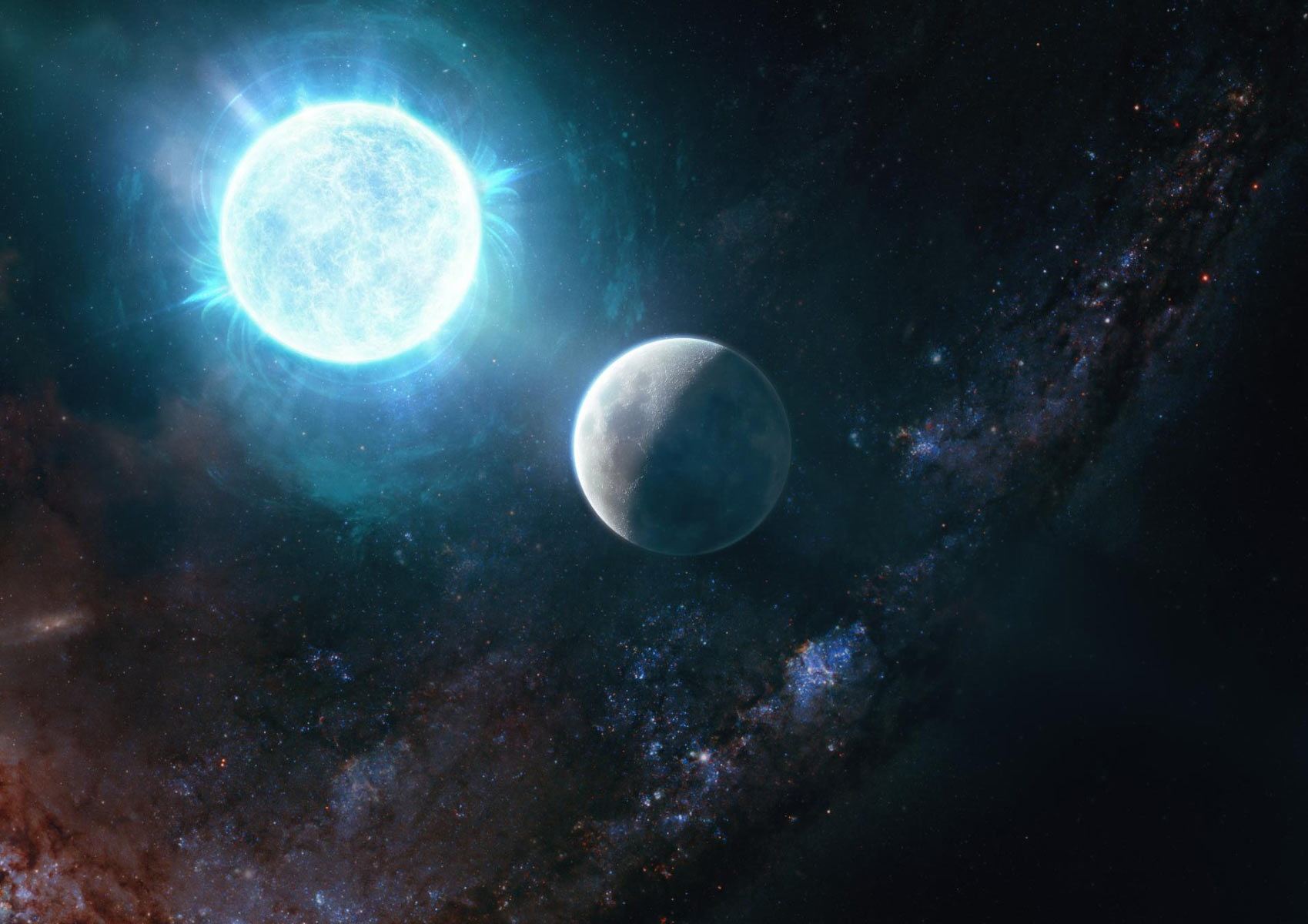A team of astronomers using the Chinese Insight-HXMT x-ray telescope have made a direct measurement of the strongest magnetic field in the known universe. The magnetic field belongs to a magnetar currently in the process of cannibalizing an orbiting companion.
Continue reading “A new Record for the Strongest Magnetic Field Seen in the Universe: 1.6 Billion Tesla”The Case is Building That Colliding Neutron Stars Create Magnetars
Magnetars are some of the most fascinating astronomical objects. One teaspoon of the stuff they are made out of would weigh almost one billion tons, and they have magnetic fields that are hundreds of millions of times more powerful than any magnetic that exists today on Earth. But we don’t know much about how they form. A new paper points to one possible source – mergers of neutron stars.
Continue reading “The Case is Building That Colliding Neutron Stars Create Magnetars”A Rare Repeating Fast Radio Burst Gives Astronomers a Chance to Study These Mysterious Objects
Fast Radio Bursts (FRBs) are among the most mysterious astronomical phenomena facing astronomers today. While hundreds of bursts have been detected since the first-ever recorded detection of an FRB in 2007 – the Lorimer Burst – astronomers are still unsure what causes them. Even more mysterious, some have occasionally been found to be repeating in nature, which has fueled speculation that they may not be natural in origin (i.e., possible alien transmissions?). Astronomers are naturally very excited whenever a repeating FRB is found, as it gives them the chance to examine them closer.
In a recent survey, an international team of scientists used three major telescopes worldwide to study a repeating FRB (known as FRB 190520) that was first observed in 2019. According to their observations, this particular FRB is not just a repeating source from a compact object but a persistent one that emits low-level bursts of radio waves between larger ones. These findings raise new questions about the nature of these mysterious objects and how they can be used as tools to probe the space between stars and galaxies.
Continue reading “A Rare Repeating Fast Radio Burst Gives Astronomers a Chance to Study These Mysterious Objects”A Pulsar has Been Found Turning so Slowly Astronomers Didn't Even Think it was Possible: Once Every 76 Seconds
Astronomy is progressing rapidly these days, thanks in part to how advances in one area can contribute to progress in another. For instance, improved optics, instruments, and data processing methods have allowed astronomers to push the boundaries of optical and infrared to gravitational wave (GW) astronomy. Radio astronomy is also advancing considerably thanks to arrays like the MeerKAT radio telescope in South Africa, which will join with observatories in Australia in the near future to create the Square Kilometer Array (SKA).
In particular, radio astronomers are using next-generation instruments to study phenomena like Fast Radio Bursts (FRBs) and neutron stars. Recently, an international team of scientists led by the University of Manchester discovered a strange radio-emitting neutron star with a powerful magnetic field (a “magnetar”) and an extremely slow rotational period of 76 seconds. This discovery could have significant implications for radio astronomy and hints at a possible connection between different types of neutron stars and FRBs.
Continue reading “A Pulsar has Been Found Turning so Slowly Astronomers Didn't Even Think it was Possible: Once Every 76 Seconds”Pulsars Could Explain the Excess of Gamma Radiation Coming from the Center of the Milky Way
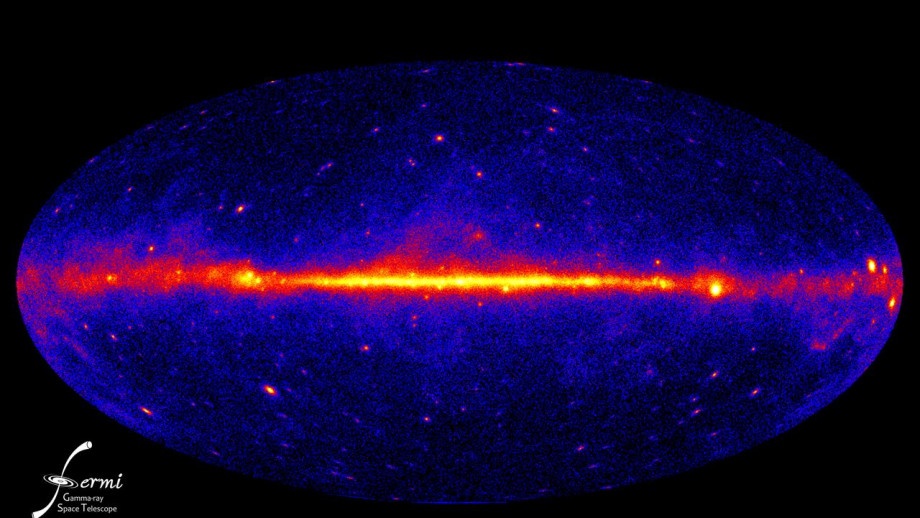
Ever hear of the Galactic Center GeV Excess? No, it’s not a cosmic rock band, although that’s a great name for one. Actually, it’s what astronomers call a super-high rate of gamma-ray radiation coming from the heart of our Milky Way Galaxy. Since this Galactic Center Excess was first detected in 2009, people thought it might be a signature of dark matter annihilating itself in mass quantities. But, as with any unexplained phenomenon in space, others disagreed. It could also have something to do with Sagittarius A*, the galaxy core’s own supermassive black hole. Or, it might be some other kind of strange burst event. Now, an astronomer at the Australian National University suggests that rapidly spinning neutron stars may be the culprits behind this high-energy galactic mystery.
Continue reading “Pulsars Could Explain the Excess of Gamma Radiation Coming from the Center of the Milky Way”The Expanding Debris Cloud From the Kilonova Tells the Story of What Happens When Neutron Stars Collide
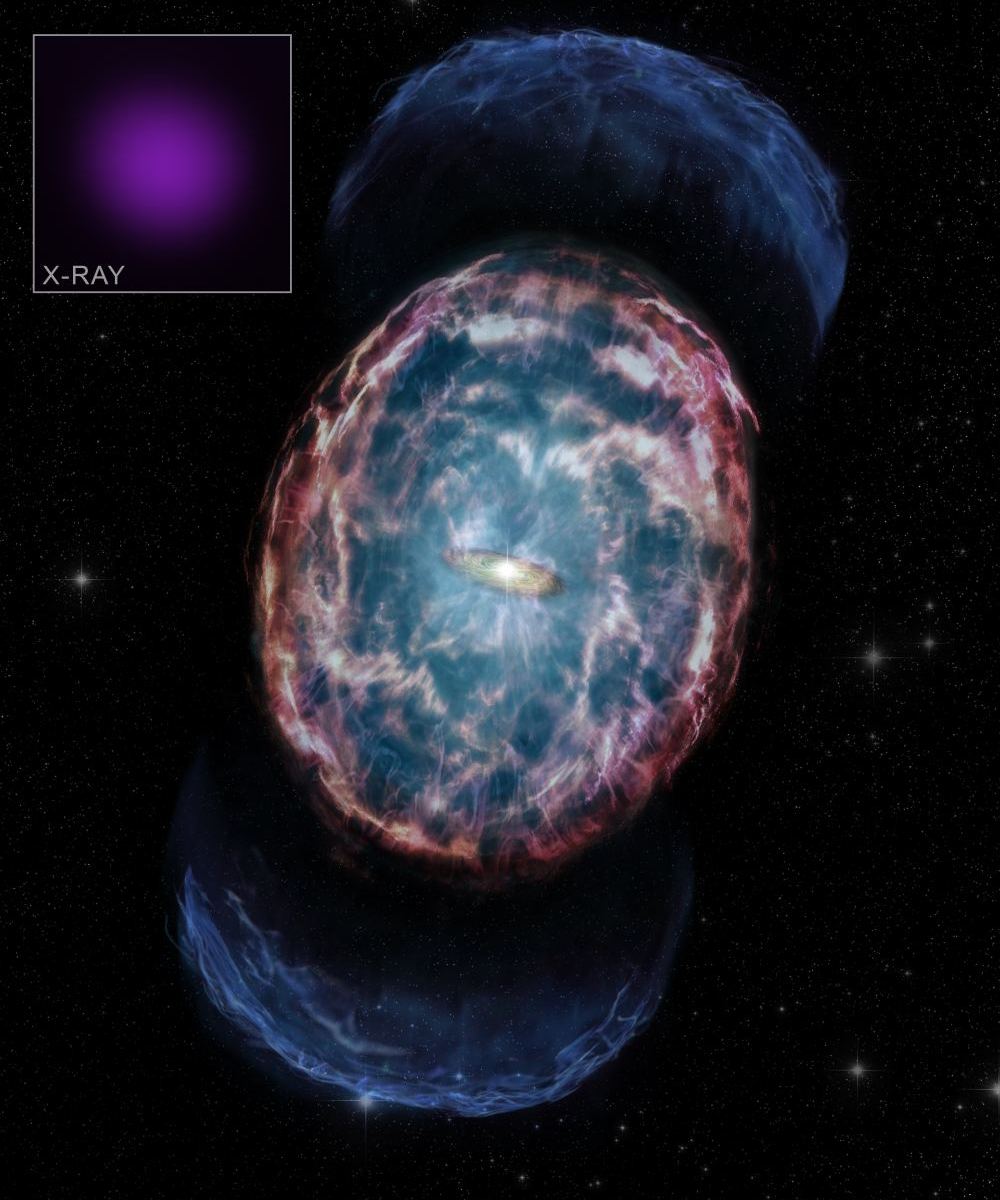
When two neutron stars collide, it creates a kilonova. The event causes both gravitational waves and emissions of electromagnetic energy. In 2017 the LIGO-Virgo gravitational-wave observatories detected a merger of two neutron stars about 130 million light-years away in the galaxy NGC 4993. The merger is called GW170817, and it remains the only cosmic event observed in both gravitational waves and electromagnetic radiation.
Astronomers have watched the expanding debris cloud from the kilonova for years. A clearer picture of what happens in the aftermath is emerging.
Continue reading “The Expanding Debris Cloud From the Kilonova Tells the Story of What Happens When Neutron Stars Collide”Astronomers Discover a Mysterious Star That Flashes Every 20 Minutes. But What is it?
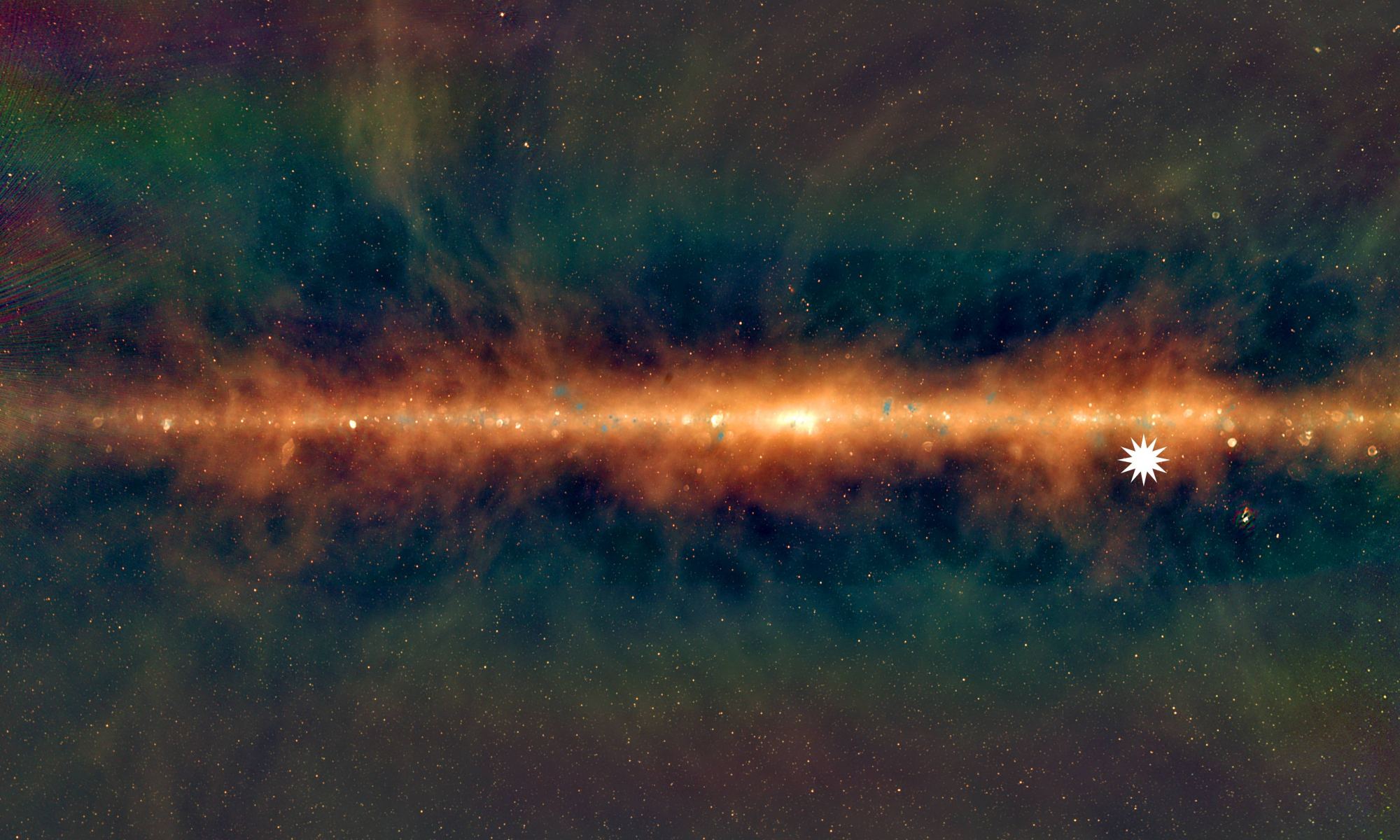
Just 4,000 light-years from Earth is a strange, star-sized object. It’s been observed by radio telescopes, but astronomers aren’t sure what it is. They call it a long period transient.
Continue reading “Astronomers Discover a Mysterious Star That Flashes Every 20 Minutes. But What is it?”Astronomy Jargon 101: Magnetars
In this series we are exploring the weird and wonderful world of astronomy jargon! Hang on to your magnetic hats, because today’s topic is magnetars!
Continue reading “Astronomy Jargon 101: Magnetars”Neutron Stars Have Mountains, They’re Just a Fraction of a Millimeter High
The universe has some very extreme places in it – and there are few places more extreme than the surface of a neutron star. These ultradense objects form after a supergiant star collapses into a sphere about 10 kilometers (6 miles) in diameter. Their surface is extreme because of the gravity, which is about a billion times stronger than Earth. However, that gravity also forces the stellar remnant to be extraordinarily flat. Just how flat is the outcome of a new set of theoretical research by PhD student Fabian Gittins from the University of Southampton.
Continue reading “Neutron Stars Have Mountains, They’re Just a Fraction of a Millimeter High”A Nearby White Dwarf Might be About to Collapse Into a Neutron Star
About 97% of all stars in our Universe are destined to end their lives as white dwarf stars, which represents the final stage in their evolution. Like neutron stars, white dwarfs form after stars have exhausted their nuclear fuel and undergo gravitational collapse, shedding their outer layers to become super-compact stellar remnants. This will be the fate of our Sun billions of years from now, which will swell up to become a red giant before losing its outer layers.
Unlike neutron stars, which result from more massive stars, white dwarfs were once about eight times the mass of our Sun or lighter. For scientists, the density and gravitational force of these objects is an opportunity to study the laws of physics under some of the most extreme conditions imaginable. According to new research led by researchers from Caltech, one such object has been found that is both the smallest and most massive white dwarf ever seen.
Continue reading “A Nearby White Dwarf Might be About to Collapse Into a Neutron Star”
